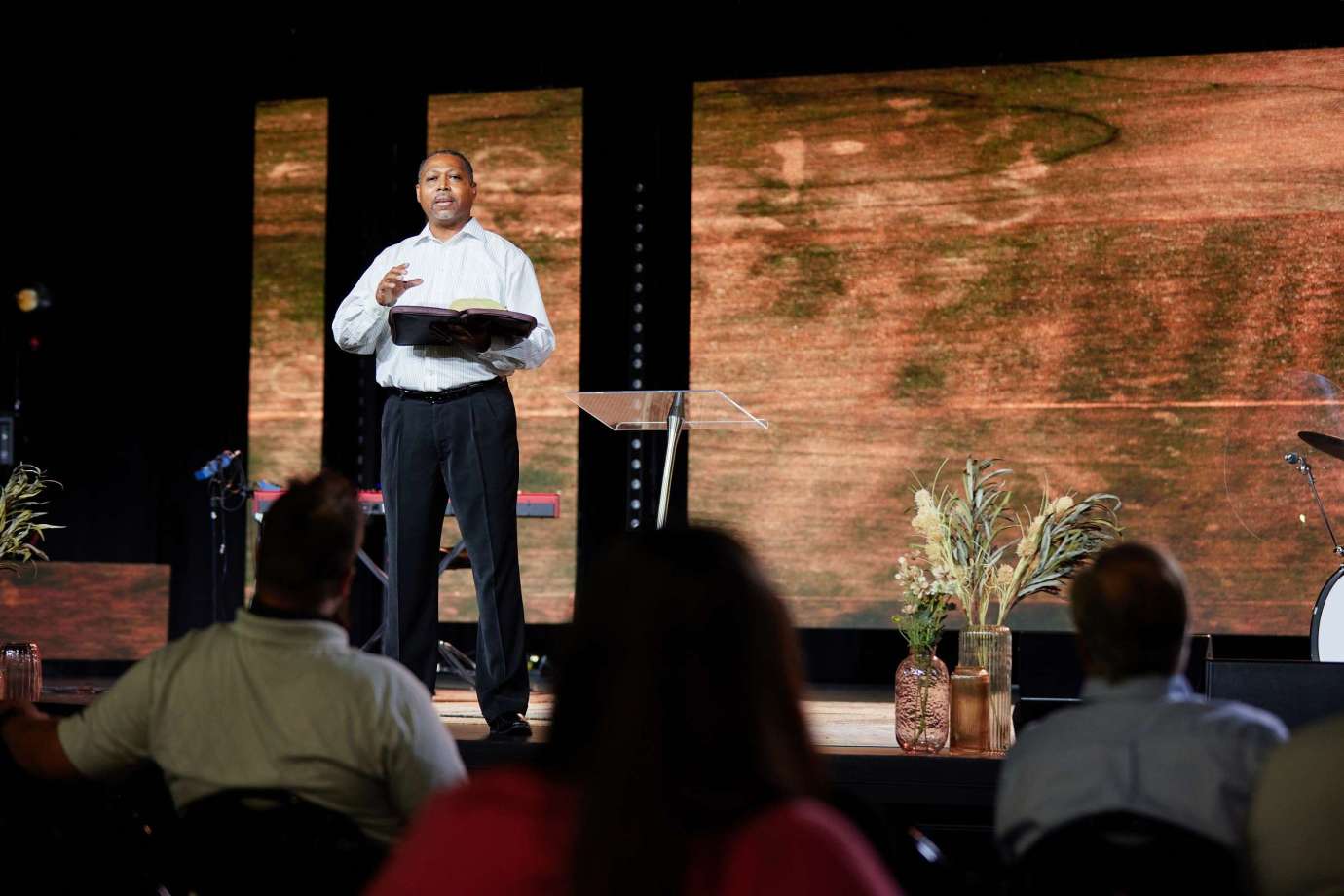ENGL 602 Methods and Materials of Research
Course Description
This course provides students with an introduction to graduate-level research and bibliography methods. In addition, students will practice the primary forms of writing expected of graduate students.
For information regarding prerequisites for this course, please refer to the Academic Course Catalog.
Course Guide
View this course’s outcomes, policies, schedule, and more.*
*The information contained in our Course Guides is provided as a sample. Specific course curriculum and requirements for each course are provided by individual instructors each semester. Students should not use Course Guides to find and complete assignments, class prerequisites, or order books.
Rationale
As a Christian professional, the student bears a particular obligation to research, read, and write well so that the ideas and interpretations he/she advances within his/her career field, whether specifically religious or secular, will bring credit to his/her faith and the Father. In-depth research into a variety of types of primary and secondary source material allows the student to situate him or herself as a professional by gaining a fuller understanding of the historical, theoretical, and critical implications of a text. Jointly, practice in bibliography, empirical research, and other common forms of information gathering and usage will equip the student to process ideas thoughtfully and communicate them clearly within his or her profession.
Course Assignment
Textbook readings and lecture presentations
No details available.
Course Requirements Checklist
After reading the Course Syllabus and Student Expectations, the student will complete the related checklist found in the Course Overview.
Discussion: Introduction to Your Career Field and Research Interests
Discussions are collaborative learning experiences. Therefore, the student is required to provide a thread in response to the provided prompt for the Discussion. The initial thread should be at least 500 words in length. In addition to the thread, the student is required to reply to 2 classmates’ threads. Each reply should be at least 100 words in length. For the initial thread, the student must support his/her assertions with citation(s) to the assigned readings and/or video presentations from the module from which the discussion appears. The initial thread should also integrate biblical principles. The student should be sure to properly cite any source material using the documentation style most commonly associated used in his/her field or the style he/she is most familiar with (MLA, APA, Turabian). (CLO: A, D, E)
Peer Review Discussions (2)
Discussions are collaborative learning experiences. Therefore, the student will participate in two (2) Peer Review Discussions within this course. Peer review and feedback are vital to this course and the Writing in Your Field Project Assignments. These Discussions will give the student an opportunity to share his/her Writing in Your Field Project Assignments in various stages, review other classmate’s assignments, and receive feedback on the assignments. Please be mindful of the assignment requirements, as these are non-traditional Discussions.
For each discussion, the student will attach the required documents to the initial thread and will write two responses to other classmates. For the Peer Review Discussion: Writing in Your Field Project: Proposal, the student will copy and paste his/her proposal from the Writing in Your Field Project: Proposal Assignment. The student’s first reply should be at least 500 words in length, providing constructive feedback to a peer’s submitted proposal. The second reply should be at least 200 words in length, responding to the proposal review that a classmate posts on the student’s initial thread. For this reply, the student should address his/her classmate’s questions and suggestions and explain how he/she plans to incorporate the feedback into his/her project.
For the Peer Review Discussion: Writing in Your Field Project: Rough Draft, the student will attach a rough draft of his/her paper for the Writing in Your Field Project: Final Product Assignment to the discussion thread within a Word document. After claiming a peer’s discussion thread to respond to and downloading the peer’s rough draft, the student will use the comments feature in Word to make 10 to 20 constructive feedback comments on the draft for a review that totals to at least 500 words in length. The student will the attach the Word document as a reply to the peer’s discussion thread and include a few sentences of summary/context for the comment he/she made in the document. For the second reply, the student will write a 250-word response to the feedback he/she received on the draft from a peer, including a brief plan to implement the suggestions.
Writing in Your Field Project: Proposal Assignment
The student will write a 2-page proposal that explains the topic choice, genre, intended audience, source types, and planned research methodology for the Writing in Your Field Project. The proposal should also include a brief description of what the final product of the project will include. The student will submit his or her proposal via Canvas to the instructor for approval. The student must cite 2–3 sources both in-text and in a reference page/works cited/bibliography. The proposal document and sources used should be formatted according to the style guide most commonly used within the student’s field (MLA, APA, AP, Chicago/Turabian, etc.). Before submitting the proposal, the student should be sure to use the rubric as a checklist to make sure he/she has addressed all necessary parts of the assignment. (CLO: A, B, C, D)
Writing in Your Field Project: Annotated Bibliography Assignment
Using the documentation style most commonly used in the chosen field, the student will correctly cite at least 10 sources he/she plans to use in the Writing in Your Field Project: Final Product Assignment. Each citation must be followed by a paragraph of 100-200 words that includes a brief summary of the source (no more than 2 sentences), an evaluation of the appropriateness of the source (credibility, timeliness, acceptability in the field, etc.), and an explanation of how the source will be used in the final piece. Before submitting the annotated bibliography, the student should be sure to use the rubric as a checklist to make sure he/she has addressed all necessary parts of the assignment. (CLO: B, C, D)
The student will submit a two-page partial draft of the Writing in Your Field Project: Final Product in order to receive feedback from the instructor. These do not have to be the first two pages of the piece. Front and back matter (e.g., title page, bibliography) do not count towards the two required pages. The student should be sure to meaningfully incorporate multiple sources into the submitted draft pages and include a bibliography/works cited/references page with the sources used at the end of the document. Depending on the student’s chosen genre, he/she may or may not use formal in-text citations in the draft. The student’s source citations should follow the style guide most commonly used within the chosen field.
The student should also be sure to include any questions he/she has and a short description of what he/she would like the instructor to focus on in the review within either a paragraph at the beginning of the draft document or as a submission comment in the assignment submission page in Canvas. Before submitting the rough draft, the student should be sure to use the rubric as a checklist to make sure he/she has addressed all necessary parts of the assignment. (CLO: A, B, C, D, E)
Writing in Your Field Project: Final Product Assignment
The student will write an 8–11-page (which excludes the front and back matter of the document) piece of research-based writing in a genre appropriate to the student’s chosen field. Genre types may include academic paper (empirical or analytical article), lesson plan, sermon, case study, business proposal, SWOT analysis, literature review, report, long-form journalistic piece, grant application, observational narrative, presentation script, scholarly journal article, or any other genre that is appropriate to the field. This list is not exhaustive.
While some projects may contain tables, figures, embedded videos, or other genre-appropriate media, at least roughly 75% of the document must contain written text. Regardless of the genre, the instructor should be able to discover the student’s purpose for writing and evaluate whether or not the student has fulfilled this purpose.
The work should contain at least 8 sources. The student is required to cite any sources used within the piece in a reference list/bibliography/works cited page at the end of the piece according to the documentation style most commonly used in the student’s chosen field. The student’s piece may or may not use in-text citations depending on the chosen genre. The student’s piece does not need to follow the formatting requriements (e.g., spacing, title pages, etc.) for an academic paper in his/her documentation style. Rather, the student should follow the formatting conventions typically used for the genre he/she is writing in. Before submitting the final product, the student should be sure to use the rubric as a checklist to make sure he/she has addressed all necessary parts of the assignment. (CLO: A, B, C, D, E)
Research Blog Post Assignment
The student will create an audience-driven, blog-style guide written in an informal tone that discusses the basics of how one knows what is needed to research, where he/she can find sources, how he/she knows if a source is credible and appropriate for a project, how he/she can incorporate sources into his/her writing, and where he/she can find more information. This will be discussed through the lens of the student’s chosen field (this does not have to be the same field chosen for the Writing in Your Field Project). The blog should be the equivalent of length of 1-3 single or double-spaced pages within a Word document. The student’s intended audience should be a less experienced colleague/participant within his/her field. Within the “Where can I find further information?” section of the post, the student will be required to cite any sources used in the creation of his/her blog post by providing the names and authors (and hyperlinks, if applicable) of the sources consulted. Additional required components of the blog post include a creative and informative title, a short introduction, and section headings. The student can either submit the blog post as a link to an actual blog (i.e., WordPress) the student has written online (a link within a Word document) or as the text of the post written in a Word document. (CLO: A, B, C, D)

Have questions about this course or a program?
Speak to one of our admissions specialists.
Inner Navigation
Have questions?
